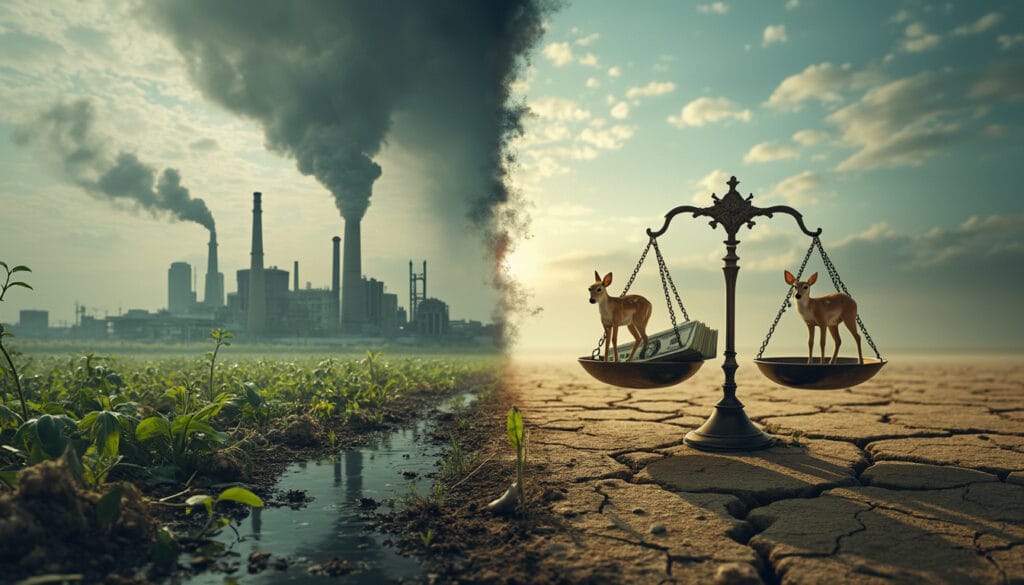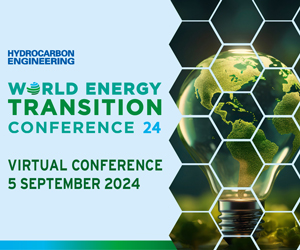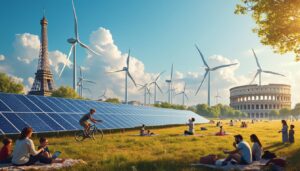The recent reconfiguration of the global economy by Donald Trump has generated serious concerns. The new tariff barriers threaten efforts to combat climate change. This decision could well be a turning point for the future of renewable energies.
Experts fear that a series of customs duties could lead to a global economic recession, severely impacting investors engaged in essential green energy projects to achieve climate goals. In particular, tariffs against China, the main manufacturer of clean energy technologies, risk slowing down green investments in the United States. This situation complicates the financial justification of clean alternatives, such as electric vehicles and low-carbon heating, making their adoption more difficult for struggling households. Moreover, the increased costs of imported components could slow down the development of the necessary infrastructure for the energy transition. Local initiatives aimed at strengthening domestic production of renewable energies face major economic hurdles. As a result, the position of the United States in the global green energy market is at risk of weakening, paving the way for other nations willing to invest in this rapidly expanding sector. This dynamic could reshape the global landscape of energy innovation.

Trump’s tariffs: what measures?
In response to rising trade tensions, Donald Trump imposed a series of tariffs primarily targeting China, the largest global manufacturer of clean technologies. These tariffs aim to protect the American domestic industry by making imported products more expensive. However, this strategy has repercussions far beyond simple trade negotiations. The renewable energy and wind energy sectors are particularly affected, as many essential technologies are imported from China. According to recent analyses, these measures could significantly hinder the development of cleaner energies in the United States, thus impacting global efforts to combat climate change.
Impact on the global economy
The introduction of Trump’s tariffs has raised concerns among economists about a potential global recession. Experts predict that trade barriers could hinder international trade, slowing economic growth. Trump’s recent decision to maintain aggressive tariffs against China, combined with new state regulations, could increase production costs and reduce the competitiveness of American companies in the global market. This situation creates an unfavorable backdrop for investments in renewable energies, essential for achieving climate goals. Additionally, the drop in oil and gas prices due to fears of a recession makes fossil fuels more attractive, diverting attention and funds from sustainable solutions.
Effects on investments in renewable energies
The tariffs imposed by the Trump administration have a direct effect on investments in renewable energies. By making imported technologies more expensive, they increase the development cost of clean energy projects in the United States. Experts such as Leslie Abrahams from the Center for Strategic and International Studies estimate that these measures could slow down the deployment of clean energies, pushing the United States behind other nations in the race for green innovation. Moreover, the rising costs of imported components, such as cement, steel, and aluminum, further complicate efforts to develop a robust domestic supply chain. As a result, investors, once attracted by the favorable policies of the Biden era, are now hesitant to engage in sustainable projects, hampered by economic uncertainty and the current administration’s anti-green signals.
The role of China in the clean technology market
China plays a crucial role in the development of clean technologies, being the largest manufacturer in this field. Trump’s tariffs threaten to reduce the United States’ access to these essential innovations, thereby limiting local capabilities to develop renewable energies. This situation could not only slow internal progress but also reposition China as the dominant leader in the global green technology market. According to Leslie Abrahams, this distancing could lead to an investment flight to other countries eager to develop their own green energy infrastructure, leaving the United States on the sidelines of international competition.
Consequences for the United States
The United States could find itself trailing in the development of clean technologies due to the imposed tariffs. By interrupting access to affordable Chinese technologies, the country increases the production cost of renewable energies, making it more difficult to justify investments in clean solutions such as electric vehicles and low-carbon heating. This situation further complicates efforts for financially struggling households, who now find eco-friendly alternatives less accessible. Moreover, the U.S. government’s goal of strengthening its manufacturing base by opening new factories will take time and be costly, as essential imported materials remain subject to tariffs. This dual economic impact reduces the attractiveness of the United States in the global renewable energy market and threatens to erode its market share abroad.
Reactions from renewable energy sector stakeholders
Renewable energy sector professionals have mixed reactions to Trump’s tariffs. Some American developers continue to maintain their existing projects but are now considering investing in other markets where trade barriers are lower. A senior executive from a major European company in the sector stated, “We are not lowering our ambitions, we are just heading to other places. The demand for clean energy projects is global, and excluding the United States can ease the management of often strained supply chains.” This strategic diversification is seen as a necessary response to maintain growth and innovation in a context of American protective policies.
Future outlook for global climate action
Despite the challenges posed by Trump’s tariffs, global climate action appears resilient. According to an analysis from 350.org, the transition to renewable energies is inevitable and will continue regardless of current U.S. policies. The rise of investments in emerging markets in Southeast Asia, Australia, and Brazil highlights a global trend towards sustainable energy solutions. However, the reduction of U.S. engagement could have significant implications for global efforts to reduce CO₂ emissions, given that the United States remains one of the largest global emitters. Marina Domingues from Rystad Energy emphasizes that without a growing energy industry, the United States risks an increase in emissions, which could undermine global climate goals.
Opportunities for emerging markets
Emerging markets offer considerable opportunities for investments in renewable energies. The growing demand for energy in regions like Southeast Asia and South America opens doors for clean technologies, often supported by national supportive policies. This dynamic can accelerate the adoption of renewable energies in these regions, thereby contributing to global efforts to reduce greenhouse gas emissions.
The role of governments in the energy transition
International governments play a crucial role in compensating for the retreat of American policies. By providing tax incentives and ensuring a stable investment environment, they can attract capital towards sustainable projects. As Dhara Vyas from Energy UK points out, “Certainty is crucial for investors. Now more than ever, governments need to strengthen stability to encourage investments in the climate agenda.” This proactive approach is essential to maintain momentum toward a global energy transition.
#short answer
Articles similaires
Thank you!
We will contact you soon.














